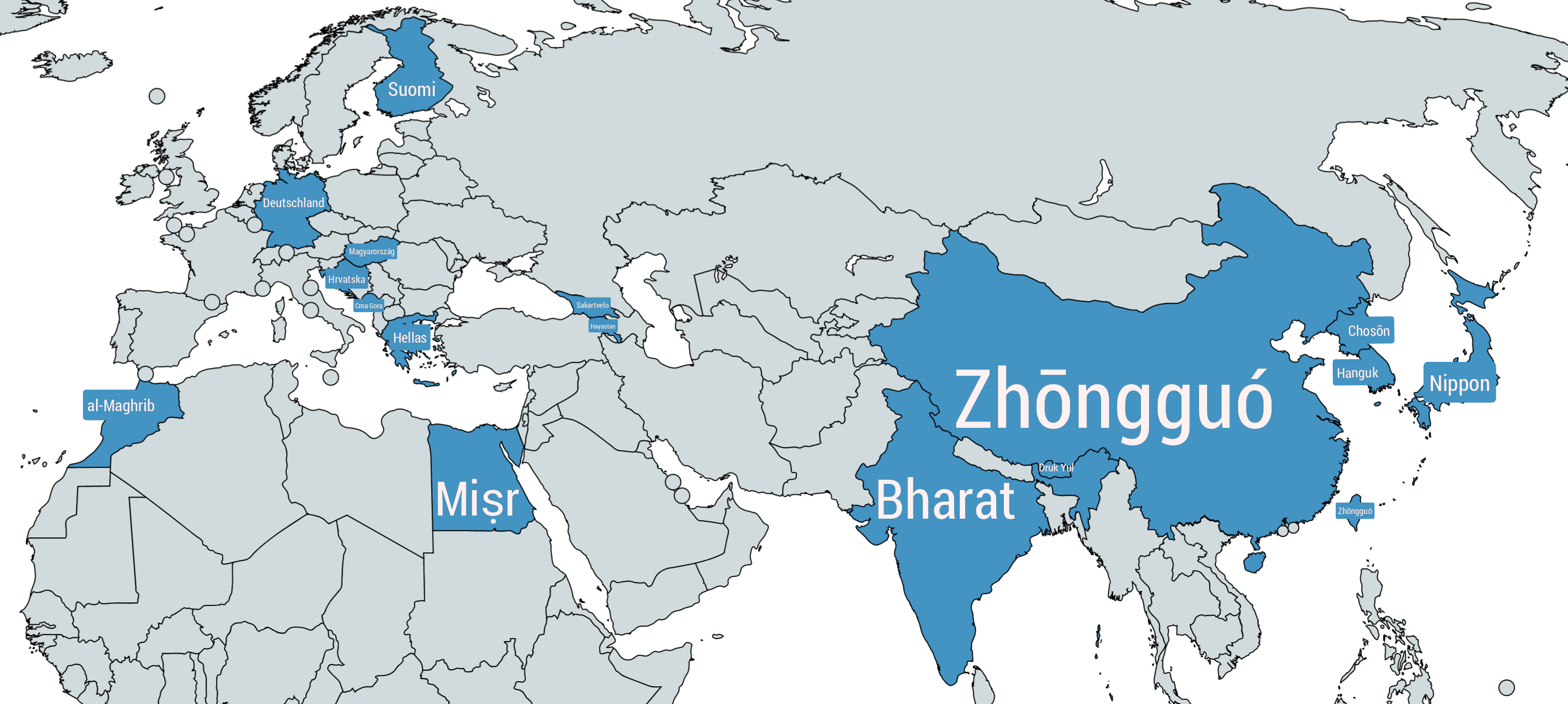Map of Countries with Different Local Names


David Chen
Data Visualization Specialist
David Chen is an expert in transforming complex geographic datasets into compelling visual narratives. He combines his background in computer science ...
Geographic Analysis
What This Map Shows
This map illustrates the fascinating disparity between the names of countries in English and their local names. It highlights places where the local name significantly differs from the English version, often reflecting unique cultural, historical, and linguistic contexts. For example, while we refer to the country as 'Germany,' its local name is 'Deutschland.' This discrepancy opens a window into understanding how language and culture shape our perception of geography.
Deep Dive into Local Names and Their Meanings
Ever wondered why names differ so drastically? The names countries go by can often reveal their history, linguistic evolution, and cultural identity. In many cases, the local name has roots in the native language, which can stem from various influences, including indigenous languages, colonial pasts, or even neighboring countries' languages.
Take ‘Japan’ for instance. In Japanese, it’s called ‘Nihon’ or ‘Nippon,’ which translates to ‘the origin of the sun.’ This intriguing name reflects Japan’s position to the east of the Asian continent, where the sun rises. Similarly, in Finland, the country is known as ‘Suomi,’ which derives from the word for swamp, a key feature of Finnish geography.
Interestingly, the discrepancy in names is not just a matter of language; it also represents a deeper cultural identity. In many instances, local names carry historical significance that connects people to their land. For example, ‘Egypt’ is derived from the Greek ‘Aigyptos,’ whereas in Arabic, it is called ‘Misr.’ This difference is a reminder of the complex history of interactions between cultures and languages.
Moreover, some names are influenced by colonialism. Countries like ‘Zimbabwe’ have a name that originates from the Shona language, meaning ‘houses of stone,’ which refers to the Great Zimbabwe ruins. This local name often reflects a sense of pride and identity that has persisted despite colonial influences.
The map also serves to highlight the importance of recognizing local names. Misnaming a country can lead to misunderstandings or diminish the cultural significance it holds for its people. By using local names, we acknowledge and respect the indigenous languages and cultures that exist within these geographical boundaries.
Regional Analysis
When examining the map regionally, we can see distinct patterns. In Europe, for example, several countries have local names that differ significantly from their English counterparts. ‘Germany’ and ‘France’ become ‘Deutschland’ and ‘La France’ respectively. This discrepancy is common in countries with rich linguistic traditions, where historical developments have shaped the language over centuries.
In Asia, the differences are equally intriguing. For instance, ‘Mongolia’ is known as ‘Mongol Uls’ in Mongolian, which translates to ‘Mongol Country.’ This name not only reflects the national identity but also emphasizes the pride Mongolians take in their heritage.
In Africa, the map reveals a rich tapestry of local names. Countries like ‘Benin’ are known locally as ‘Dahomey,’ which was the name of the kingdom that once thrived in the region. This historical context adds depth to our understanding of the country beyond its colonial name.
Significance and Impact
Understanding the local names of countries matters for several reasons. Firstly, it fosters respect and recognition of different cultures and languages. In a globalized world, where interactions across borders are increasing, being aware of local names can enhance communication and understanding.
Moreover, local names can have implications for tourism and international relations. Countries that promote their local names often do so as a way to assert their identity on the global stage. Have you noticed how many countries are now emphasizing their local names in tourism campaigns? This trend highlights a shift towards valuing indigenous cultures and languages.
Looking to the future, as globalization continues to influence cultural exchange, the conversation around local names will likely grow more prominent. It’s essential to consider how this affects national identity and cultural preservation. As we recognize these differences, we not only expand our geographical knowledge but also deepen our appreciation for the diverse world we inhabit.
In conclusion, the map serves as a reminder that names are not just labels; they carry meaning, history, and identity. By understanding the local names of countries, we can foster a greater appreciation for the rich tapestry of global cultures and histories.
Visualization Details
- Published
- September 21, 2025
- Views
- 64
Comments
Loading comments...